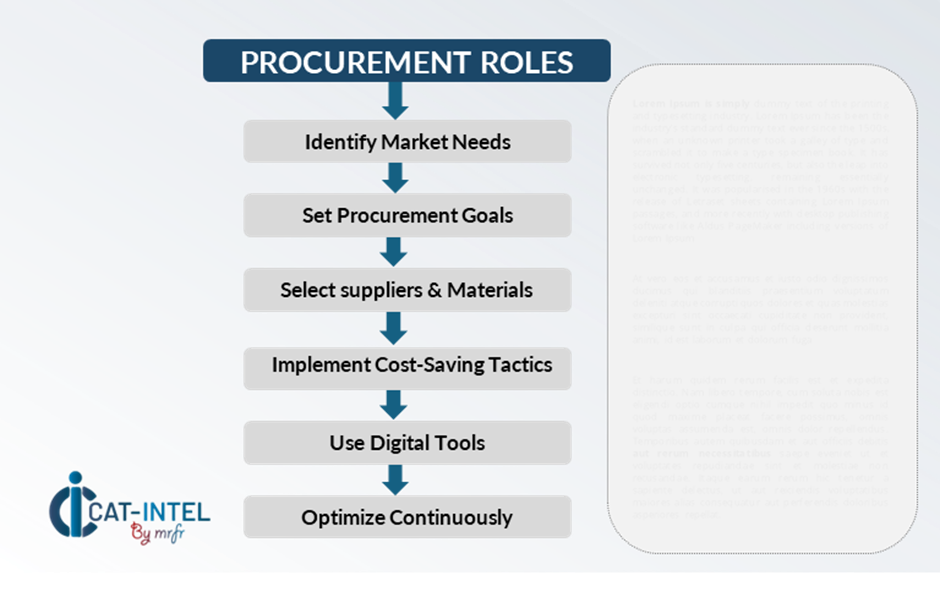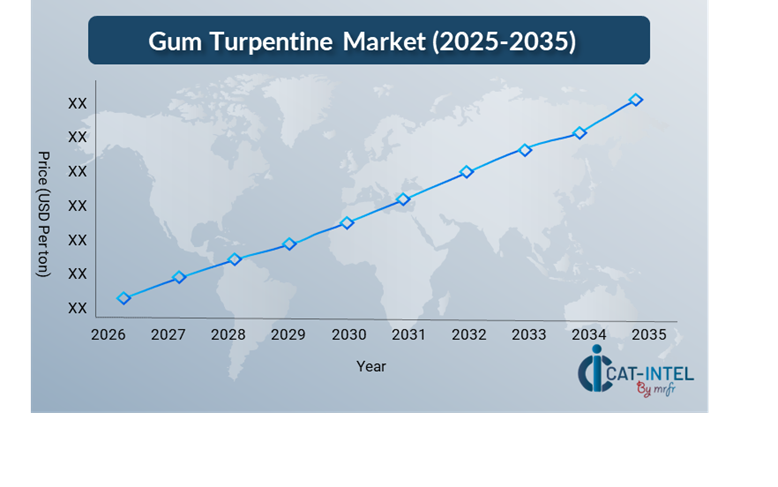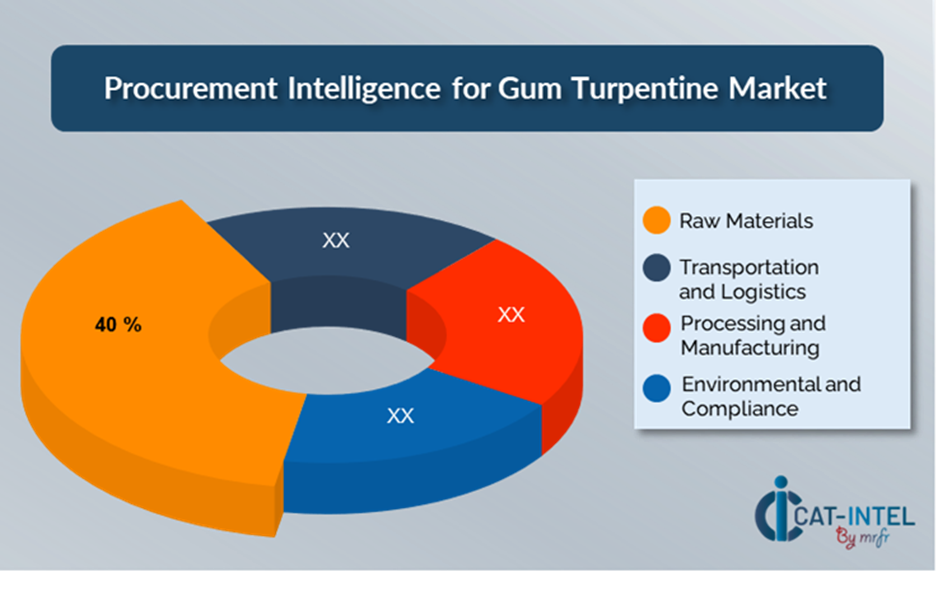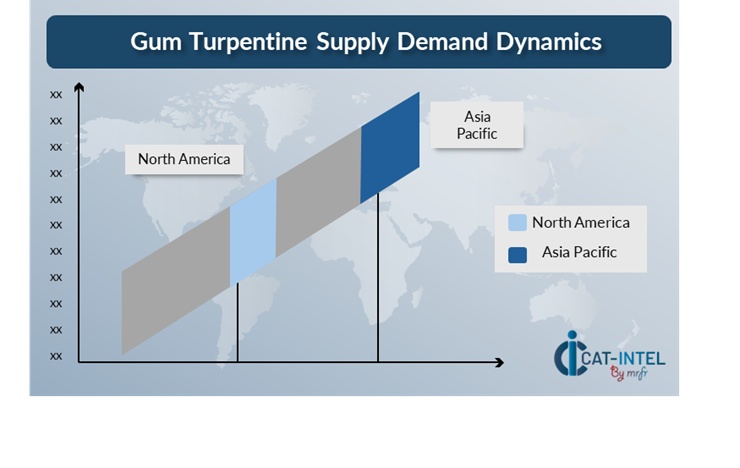Gum Turpentine Market Overview:
The global gum turpentine market is steadily expanding, fuelled by demand from a variety of industries including manufacturing, pharmaceuticals, cosmetics, and chemicals. This market contains many varieties of gum turpentine, such as crude gum turpentine and refined products, each tailored to specific industry requirements. Our paper provides an in-depth analysis of procurement trends, with an emphasis on cost optimization measures and the growing use of sustainable practices to improve production and operational efficiency.
The key issues in gum turpentine procurement are managing raw material costs, assuring product quality, maintaining supply chain stability, and incorporating sustainable sourcing strategies. The use of sophisticated technology and strategic sourcing is critical for streamlining procurement processes and maintaining long-term competitiveness. As global demand continues to climb, businesses are using market intelligence to optimize operations efficiency, mitigate risks, and meet evolving consumer and regulatory expectations.
- Market Size: The global Gum Turpentine market is projected to reach USD 2.6 billion by 2035, growing at a CAGR of approximately 5.62% from 2025 to 2035.
 Sector Contributions: Growth in the market is driven by:
Sector Contributions: Growth in the market is driven by:
- Manufacturing and Supply Chain Optimization: Real-time data and process integration are becoming increasingly important in the gum turpentine supply chain to streamline operations, minimize delays, and increase overall production efficiency.
- Retail and E-Commerce Growth: The gum turpentine industry is experiencing an increase in demand for value-added items such as perfumes, paints, and cosmetics, which require excellent inventory management, demand forecasting, and customer relationship management (CRM).
- Technological Transformation: Advances in AI and machine learning are improving gum turpentine production and distribution by providing predictive analytics, quality control automation, and logistical optimization.
- Innovations: The development of modular gum turpentine solutions enables businesses to select and integrate only the functionalities required, lowering costs, waste, and complexity in production processe
- Investment Initiatives: Companies are progressively investing in more sustainable gum turpentine manufacturing processes to meet environmental criteria while also saving money, such as by lowering infrastructure costs and enabling more effective remote monitoring.
- Regional Insights: North America and Asia Pacific continue to contribute significantly to the gum turpentine market, owing to strong digital infrastructure and increased demand for environmentally friendly products and practices.
Key Trends and Sustainability Outlook:
- Cloud Integration: The rising use of cloud-based solutions for gum turpentine production improves scalability, cost effectiveness, and data access, allowing for real-time updates across worldwide supply chains.
- Advanced Features: The use of AI, IoT, and blockchain in the gum turpentine industry enables smarter decision-making, increases automation, improves traceability, and ensures supply chain transparency.
- Focus on Sustainability: As demand for environmentally friendly products grows, gum turpentine manufacturers are concentrating on sustainable sourcing and waste reduction measures.
- Customization Trends: There is a growing need for customized gum turpentine products for specialized industries such as medicines, chemicals, and personal care products.
- Data-Driven Insights: Advanced analytics enable gum turpentine producers to correctly estimate demand, adjust inventory levels, and measure performance metrics in real time, resulting in increased operational efficiency.
Growth Drivers:
- Digital Transformation: As the gum turpentine business adopts more digital technology, firms can increase efficiency, streamline operations, and improve traceability.
- Demand for Process Automation: As the demand for gum turpentine grows, businesses are increasingly turning to automated solutions for quality control, bottling, packing, and distribution to reduce manual intervention.
- Scalability Requirements: Companies in the gum turpentine market are looking for scalable solutions that can grow alongside them, ensuring smooth integration across varied production and distribution networks.
- Regulatory Compliance: The gum turpentine market is subject to strict environmental and health restrictions. Producers are using innovative software solutions to automate compliance reporting and ensure data accuracy for regulatory agencies.
- Globalization: With increasing international demand, particularly in emerging countries, gum turpentine producers are looking for solutions that support multi-currency transactions and multi-language interfaces.
Overview of Market Intelligence Services for the Gum Turpentine Market:
Recent market evaluations have identified major obstacles in the gum turpentine sector, such as high raw material costs and the need for process optimization and customization. Market intelligence reports offer useful insights into procurement opportunities, allowing businesses to uncover cost-cutting initiatives, optimize supplier management, and improve overall operational efficiency. These insights not only help firms comply with industry requirements but also keep high-quality standards while effectively controlling costs.
To remain competitive in the gum turpentine industry, businesses are improving their procurement processes through spend monitoring and vendor performance tracking. Effective category management and strategic sourcing are critical for lowering procurement costs while maintaining a consistent and dependable supply of high-quality gum turpentine products. Businesses may improve their procurement strategies, negotiate better terms with suppliers, and ensure a steady supply of high-quality goods by employing relevant market data. This method not only reduces costs but also enhances supply chain resilience and market competitiveness.
 Pricing Outlook for Gum Turpentine: Spend Analysis
Pricing Outlook for Gum Turpentine: Spend Analysis
The pricing outlook for gum turpentine is projected to be moderately dynamic, impacted by different variables shaping supply and demand. Raw material cost changes, desire for sustainable sourcing, regional pricing differences, and the need for increased operational efficiency across industries are all key factors. Furthermore, the growing emphasis on product quality, environmental compliance, and technological advances in processing are likely to put increasing pressure on gum turpentine prices.
Graph shows general upward trend pricing for Gum Turpentine and growing demand. However, there may be fluctuations influenced by economic conditions, technological advancements, and competitive dynamic.

Efforts to streamline procurement processes, improve supplier management, and implement sustainable production techniques are critical for cost control in the gum turpentine industry. Using digital technologies for market monitoring, price forecasting using sophisticated analytics, and efficient contract administration can help to increase cost efficiency and support long-term business strategy.
To efficiently manage gum turpentine procurement expenses, significant techniques include partnering with trusted suppliers, negotiating long-term contracts, and considering bulk purchase solutions. Despite these hurdles, focusing on scalability, and assuring sustainable sourcing, and investing in cutting-edge processing technologies will be crucial for maintaining cost-effectiveness.
Cost Breakdown for Gum Turpentine: Total Cost of Ownership (TCO) and Cost-Saving Opportunities

- Raw Material: (40%)
- Description: Gum turpentine's key cost driver is the price of raw materials extracted from pine tree gum.
- Trends: As consumers and businesses emphasize environmentally friendly materials, suppliers are under pressure to embrace sustainable forestry methods, which can occasionally raise raw material costs due to stricter harvesting and certification standards.
- Transportation and Logistics: (XX%)
- Processing and Manufacturing: (XX%)
- Environmental and Compliance: (XX%)
Cost-Saving Opportunities: Negotiation Levers and Purchasing Negotiation Strategies
In the gum turpentine business, streamlining procurement processes and employing smart negotiation strategies can result in significant cost savings and increased operating efficiency. Long-term agreements with dependable suppliers, particularly those providing sustainable and environmentally friendly gum turpentine solutions, can lead to improved price structures, volume-based discounts, and bundled service packages. Negotiating flexible pricing parameters and signing long-term contracts ensures price stability while mitigating against raw material cost changes.
Adopting supplier agreements that stress innovation and sustainability provides additional benefits, including access to cutting-edge processing technology, sustainable sourcing methods, and product customization choices. These advances help to lower long-term operational expenses while also improving gum turpentine quality. Implementing digital procurement solutions, such as contract management platforms and market analytics, improves transparency, reduces waste, and maximizes material efficiency. Businesses can reduce reliance on a single supplier by diversifying supplier options and implementing multi-vendor strategies, mitigate risks associated with supply chain disruptions, and increase negotiation leverage for better pricing and service consistency.
Supply and Demand Overview for Gum Turpentine: Demand-Supply Dynamics and Buyer Intelligence for Effective Supplier Relationship Management (SRM)
The gum turpentine market is steadily expanding, driven by rising demand in industries such as manufacturing, chemicals, cosmetics, and pharmaceuticals. Technological improvements, environmental sustainability standards, and evolving global economic situations all have an impact on supply and demand dynamics.
Demand Factors:
- Sustainability Eco-friendly Initiatives: The increased emphasis on environmental sustainability is driving demand for sustainably derived gum turpentine, particularly in industries such as cosmetics and pharmaceuticals, which value natural, renewable resources.
- Customization Requirements: Many industries, including cosmetics, paints, and cleaning products, require gum turpentine in precise compositions, increasing demand for specialized solutions that fulfil regulatory standards and operational requirements.
- Health and Safety Standards: Increased regulatory requirements for product purity, traceability, and safety in industries such as pharmaceuticals and personal care are driving demand for high-quality, certified gum turpentine.
- Supply Chain Integration: The requirement for efficient, transparent supply chains is driving improved integration between raw material suppliers and enterprises who utilize gum turpentine in their products.
Supply Factors:
- Technological Advancements: Processing technology advancements, sustainable harvesting methods, and improved extraction procedures are strengthening gum turpentine offers and increasing supplier competitiveness.
- Supplier Ecosystem: As the number of gum turpentine producers grows, customers have more options, ranging from large-scale industrial suppliers to specialized and sustainable providers, resulting in more competitive pricing and different supply sources.
- Global Economic Factors: Exchange rates, labour costs, and regional technological adoption rates all have an impact on gum turpentine pricing and availability. Economic situations in important producing regions, such as Africa and South America, can have a considerable impact on raw material costs.
- Scalability and Flexibility: Modern gum turpentine production methods have grown more scalable, enabling suppliers to serve enterprises of all sizes and needs, from tiny craft industries to huge manufacturing operations.
Regional Demand-Supply Outlook: Gum Turpentine
The Image shows growing demand for Gum Turpentine in both Asia Pacific and North America, with potential price increases and increased Competition.

Asia Pacific: Dominance in the Gum Turpentine Market
Asia Pacific, particularly China, is a dominant force in the global Gum Turpentine market due to several key factors:
- Large Raw Material Supply: Asia-Pacific, particularly Southeast Asia, is home to huge natural forests and a plentiful supply of pine trees, the principal source of gum turpentine.
- Industrial Demand: The region has experienced tremendous industrialization, particularly in cosmetics, medicines, and manufacturing.
- Cost-effective Production: Many Asia-Pacific countries have reduced labour and operating expenses, making them an appealing site for producing gum turpentine at competitive prices.
- Export Hub for Gum Turpentine: Asia-Pacific is geographically placed as a global commerce hub, allowing for simple export of gum turpentine to key markets in Europe, North America, and other parts of the world.
- Focus on Sustainability: The need for environmentally friendly and responsibly sourced products has led Many Asia-Pacific suppliers are adopting environmentally sustainable procedures in gum turpentine production.
Asia Pacific Remains a key hub Gum Turpentine Price Drivers Innovation and Growth
Supplier Landscape: Supplier Negotiations and Strategies
The supplier landscape in the gum turpentine market is equally diverse and fiercely competitive, with a mix of major, established producers and smaller, specialist suppliers affecting market dynamics. These suppliers influence important elements such as cost, product quality, sustainability practices, and customisation options. Large-scale producers dominate the market, offering a diverse range of gum turpentine products, while smaller, specialized suppliers focus on specific industries or unique offerings, such as sustainable sourcing or enhanced purity for pharmaceutical and cosmetic applications.
The gum turpentine supplier ecosystem includes significant production regions such as South America, Southeast Asia, and Africa, with both global players and creative local sources meeting the growing need for environmentally friendly and high-quality products. As businesses prioritize sustainability, regulatory compliance, and operational efficiency, gum turpentine providers are developing new production methods, incorporating sustainable harvesting practices, and providing flexible, customizable solutions to meet changing market demands. Furthermore, suppliers are embracing new technology and innovative approaches to improve product quality, traceability, and transparency, in response to the growing need for sustainable, responsibly sourced raw materials across industries.
Key Suppliers in the Gum Turpentine market include:
- Arakawa Chemical Industries, Ltd.
- International Flavors & Fragrances
- Dérivés Résiniques et Terpéniques
- Pine Chemical Group
- Georgia-Pacific Chemical
- Weyerhaeuser Company
- Symrise AG
- M. Huber Corporation
- Resinas Ceres S.A
- Pinova Holdings Inc.

Key Developments Procurement Category Significant Development:
|
Significant Development |
Description |
|
Market Growth |
The gum turpentine market is expanding rapidly, driven by rising demand in industries such as cosmetics, pharmaceuticals, and manufacturing. Companies want high-quality, sustainably sourced gum turpentine to meet regulatory requirements and consumer expectations for environmentally friendly products. Emerging markets, particularly Asia and Africa, are driving demand as they grow their manufacturing and consumer goods sectors. |
|
Cloud Adoption |
There is a growing trend of sustainable gum turpentine sourcing, with enterprises favouring eco-friendly operations in response to rising environmental awareness and regulatory compliance. Companies are concentrating on responsible harvesting procedures, increasing supply chain transparency, and assuring traceability to meet customer and regulatory demands for sustainability. |
|
Product Innovation |
Innovations in extraction processes, purification technologies, and product formulations are broadening the spectrum of gum turpentine products available, increasing purity levels, and providing customized solutions for various market segments. |
|
Technological Advancements |
Technological developments include automation in harvesting and processing, as well as breakthroughs in quality control and testing. Increasing the capacity of the gum turpentine industry. These innovations are increasing manufacturing efficiency, enhancing product uniformity, and allowing for quicker processing times, thereby satisfying the increased demand for high-quality gum turpentine. |
|
Global Trade Dynamics |
Changes in trade rules, worldwide environmental norms, and regional economic policies are influencing gum turpentine adoption trends, particularly among multinational corporations. Import/export restrictions and tariff changes have an impact on the price and availability of gum turpentine, especially for enterprises that manage complicated supply chains across many locations. |
|
Customization Trends |
The demand for gum turpentine suited to specific industry needs is increasing, particularly in cosmetics, personal care, and paints. Businesses are looking for suppliers who can provide customized products that satisfy specific formulation needs, as well as modular supply chain solutions that allow for flexibility in sourcing and processing. |
|
Gum Turpentine Attribute/Metric |
Details |
|
Market Sizing |
The global Gum Turpentine market is projected to reach USD 2.6 billion by 2035, growing at a CAGR of approximately 5.62% from 2025 to 2035. |
|
Gum Turpentine Technology Adoption Rate |
Around 65% of enterprises in industries such as cosmetics, medicines, and cleaning goods have used gum turpentine, particularly as demand for high-quality, environmentally friendly components grows. |
|
Top Gum Turpentine Industry Strategies for 2025 |
Prioritizing environmentally friendly harvesting and production practices, which fit with global sustainability trends. Gum turpentine products are tailored to certain industries, such as formulations for high-end cosmetics, pharmaceuticals, and industrial applications.
|
|
Gum Turpentine Process Automation |
Approximately 55% of gum turpentine producers have automated critical processes like as inventory management, quality control, and packaging. Automation is rapidly being used to boost production productivity, minimize operational costs, and maintain consistent product quality.
|
|
Gum Turpentine Process Challenges |
Securing excellent raw materials and adhering to sustainable sourcing standards can be costly. Adhering to environmental regulations and certification processes can be difficult and expensive. Suppliers face risks due to the market's global nature, changes in trade policy, weather patterns, and local economic considerations.
|
|
Key Suppliers |
Companies like Arakawa Chemical Industries, Ltd., and International Flavors & Fragrances, provide high-quality, sustainably sourced gum turpentine products that fulfil industry-specific requirements.
|
|
Key Regions Covered |
Asia-Pacific and North America are major markets for gum turpentine, with significant demand in the cosmetics, pharmaceutical, and manufacturing industries.
|
|
Market Drivers and Trends |
Sustainable sourcing and environmentally friendly production processes are becoming increasingly important, notably in the cosmetics and personal care industries. There is an increasing demand for bespoke gum turpentine compositions for industry-specific uses.
|
Frequently Asked Questions (FAQ):
Our procurement intelligence services provide detailed market analysis for gum turpentine suppliers, identifying key players and evaluating trends in sustainable sourcing and product quality. We offer spend analysis, supplier evaluations, and sourcing strategies to help secure high-quality gum turpentine at competitive prices while ensuring sustainability.
We help assess the TCO for gum turpentine by considering factors such as raw material costs, transportation, quality control, and sustainability certifications. This analysis ensures a clear understanding of the financial impact of sourcing gum turpentine and supports more cost-effective purchasing decisions.
Our risk management services focus on mitigating risks such as supply chain disruptions, price volatility, and environmental regulations. We assist in identifying reliable suppliers, monitoring their compliance with sustainability standards, and ensuring continuous supply of quality gum turpentine.
Our Supplier Relationship Management (SRM) services foster strong, long-term partnerships with gum turpentine suppliers. We assist with contract negotiations, performance tracking, and integration processes to ensure consistent, high-quality supply and favorable terms.
We recommend best practices such as supplier diversification, quality assessments, sustainability certifications, and continuous performance evaluations. These practices ensure transparency, cost-efficiency, and a reliable supply of gum turpentine.
Digital tools streamline gum turpentine procurement by automating supplier selection, enhancing transparency in the supply chain, and improving contract management. These advancements help reduce costs, increase supply chain resilience, and enhance operational efficiency.
Our supplier performance management services evaluate key metrics such as product quality, delivery reliability, and compliance with sustainability standards. These assessments ensure a steady, reliable supply of gum turpentine and help inform future sourcing decisions.
We support negotiations by leveraging market insights, assessing supply chain dynamics, and applying strategies such as bulk purchasing agreements, multi-year contracts, and flexible payment terms to secure competitive pricing and favourable contract conditions.
We offer tools that provide detailed insights into market pricing trends, supplier capabilities, sustainability practices, and supply chain forecasts. These resources enable data-driven decision-making for gum turpentine procurement strategies.
We help ensure compliance by identifying suppliers that meet environmental and regulatory standards, including certifications for sustainable sourcing and fair labor practices. This ensures that your gum turpentine procurement aligns with industry regulations and your organization’s sustainability goals.
We recommend diversifying supplier sources, implementing backup suppliers, and utilizing digital supply chain management tools to track inventory levels and shipments. These strategies minimize the impact of disruptions, ensuring a steady supply of gum turpentine.
Our performance tracking solutions monitor key metrics such as product quality, on-time delivery, and compliance with sustainability practices. This helps you evaluate supplier reliability and adjust sourcing strategies accordingly.
We identify gum turpentine suppliers that prioritize responsible sourcing, sustainable harvesting methods, and compliance with environmental certifications. This supports alignment with your organization’s sustainability goals and ensures ethical sourcing.
Our pricing analysis compares supplier rates, tracks market trends, and applies negotiation techniques to secure cost-effective gum turpentine procurement. We focus on obtaining high-quality products while ensuring favourable pricing structures.
We assist in implementing quality control processes such as supplier audits, product testing, and monitoring certifications for sustainable and high-quality production. Regular performance evaluations and compliance checks help ensure that the gum turpentine consistently meets your required specifications and industry standards.








